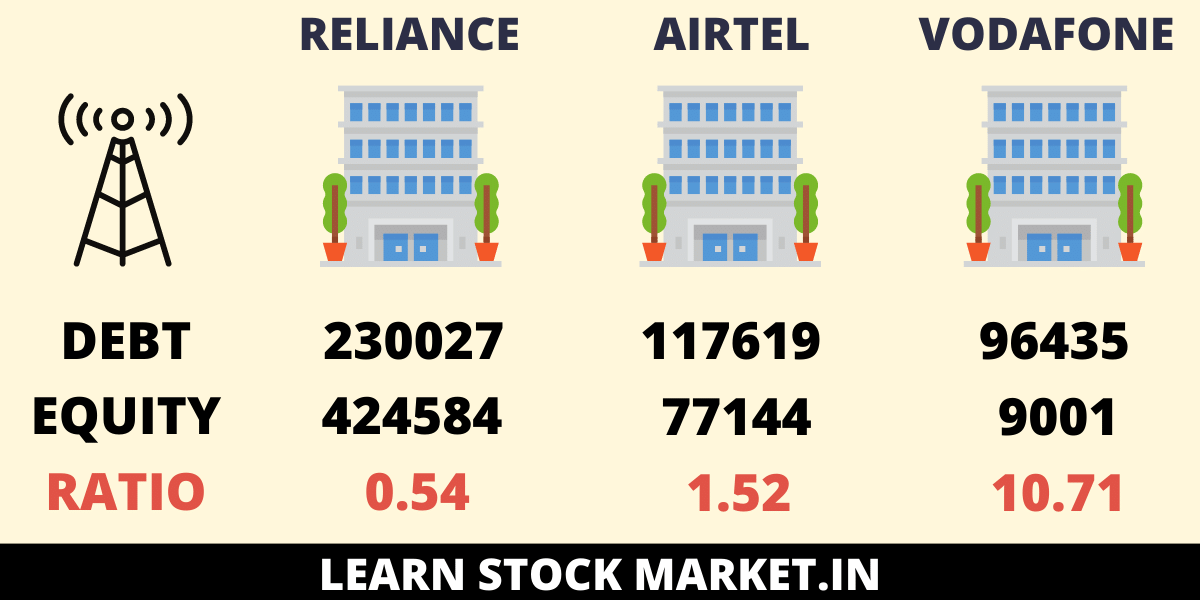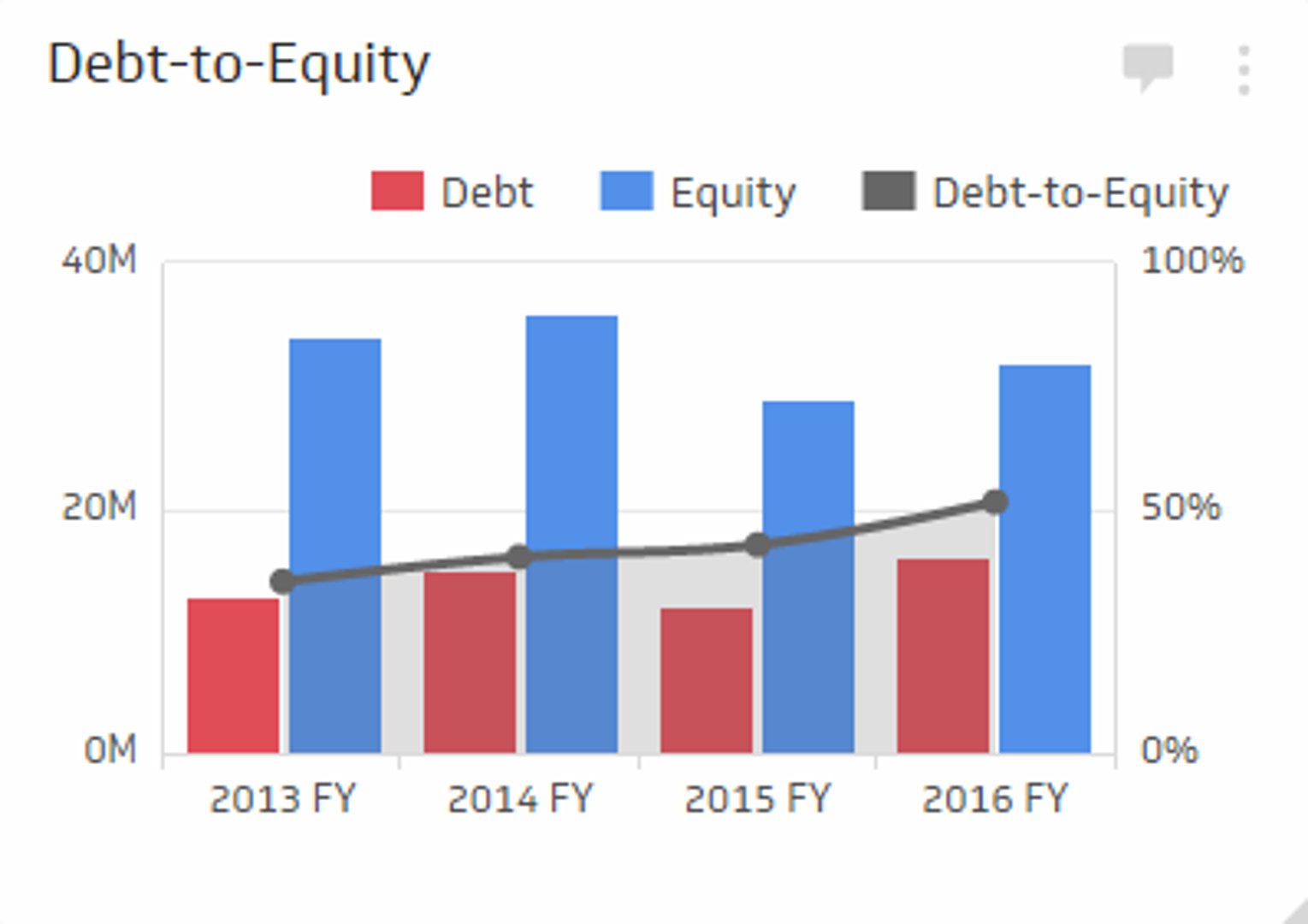Debt to Equity D

Creditors view a higher debt to equity ratio as risky because it shows that the investors haven’t funded the operations as much as creditors have. In other words, investors don’t have as much skin in the game as the creditors do. This could mean that investors don’t want to fund the business operations because the company isn’t performing well.
Related Terms
A business that ignores debt financing entirely may be neglecting important growth opportunities. The benefit of debt capital is that it allows businesses to leverage a small amount of money into a much larger sum and repay it over time. This allows businesses to fund expansion projects more quickly than might otherwise be possible, theoretically increasing profits at an accelerated rate. The formula for calculating the debt-to-equity ratio (D/E) is equal to the total debt divided by total shareholders equity. Taking a broader view of a company and understanding the industry its in and how it operates can help to correctly interpret its D/E ratio. For example, utility companies might be required to use leverage to purchase costly assets to maintain business operations.
What is your current financial priority?
In fact, a firm that uses its leverage to capitalize on a high-return project will likely outperform one that uses very little debt but sits in an unfavorable position in its industry, he says. InvestingPro offers detailed insights into companies’ D/E Ratio including sector benchmarks and competitor analysis. This result indicates that XYZ Corp has $3.00 of debt for every dollar of equity. Currency fluctuations can affect the ratio for companies operating in multiple countries. It’s advisable to consider currency-adjusted figures for a more accurate assessment. Finance Strategists has an advertising relationship with some of the companies included on this website.
Debt to Equity Ratio
Here’s what you need to know about the debt-to-equity ratio and what it reveals about a company’s capital structure to make better investing decisions. For instance, utility companies often exhibit high D/E ratios due to their capital-intensive nature and steady income streams. These companies frequently borrow extensively, given their stable returns, making high leverage ratios a common and efficient use of capital in this slow-growth sector.
The debt-to-equity ratio (D/E) is a financial leverage ratio that can be helpful when attempting to understand a company’s economic health and if an investment is worthwhile or not. It is considered to be a gearing ratio that compares the owner’s equity or capital to debt, or funds borrowed by the company. On the other hand, companies with low debt-to-equity ratios xero review 2022 aren’t always a safe bet, either. For example, a company may not borrow any funds to support business operations, not because it doesn’t need to but because it doesn’t have enough capital to repay it promptly. To look at a simple example of a debt to equity formula, consider a company with total liabilities worth $100 million dollars and equity worth $85 million.

- Whether you’re an investor deciding where to put your money or a business owner trying to improve your operations, this number is crucial.
- However, a low D/E ratio is not necessarily a positive sign, as the company could be relying too much on equity financing, which is costlier than debt.
- As a result the equity side of the equation looks smaller and the debt side appears bigger.
- The debt-to-equity (D/E) ratio can help investors identify highly leveraged companies that may pose risks during business downturns.
As noted above, it’s also important to know which type of liabilities you’re concerned about — longer-term debt vs. short-term debt — so that you plug the right numbers into the formula. Regulatory and contractual obligations must be kept in mind when considering to increase debt financing. Companies generally aim to maintain a debt-to-equity ratio between the two extremes. Obviously, it is not possible to suggest an ‘optimum’ debt-to-equity ratio that could apply to every organization. What constitutes an acceptable range of debt-to-equity ratio varies from organization to organization based on several factors as discussed below.
Profit and prosper with the best of expert advice on investing, taxes, retirement, personal finance and more – straight to your e-mail. My Accounting Course is a world-class educational resource developed by experts to simplify accounting, finance, & investment analysis topics, so students and professionals can learn and propel their careers. Adam Hayes, Ph.D., CFA, is a financial writer with 15+ years Wall Street experience as a derivatives trader. Besides his extensive derivative trading expertise, Adam is an expert in economics and behavioral finance. Adam received his master’s in economics from The New School for Social Research and his Ph.D. from the University of Wisconsin-Madison in sociology.
Lack of performance might also be the reason why the company is seeking out extra debt financing. The Debt to Equity ratio is a financial metric that compares a company’s total debt to its shareholder equity. A higher ratio suggests that a company is more reliant on debt, which may increase the risk of insolvency during periods of economic downturn. Conversely, a lower ratio indicates that the company is primarily funded by equity, implying lower financial risk. This ratio also helps in comparing companies within the same industry, offering a benchmark to understand how a company’s leverage stacks up against its peers. Total debt represents the aggregate of a company’s short-term debt, long-term debt, and other fixed payment obligations, such as capital leases, incurred during normal business operations.




 120 N Congress St.
120 N Congress St.